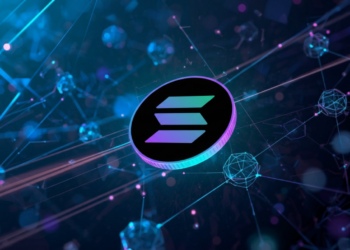Bitcoin is often hailed as the world’s first and most robust cryptocurrency. But even Bitcoin, with its solid foundation and widespread adoption, must evolve to keep up with modern demands for security, scalability, and privacy. One of the most significant upgrades in Bitcoin’s history is Taproot, activated on November 14, 2021, at block 709,632. But what exactly is Taproot, why was it needed, and how will it benefit Bitcoin in both the short and long term?
In this blog post, we’ll break down Taproot in simple terms—no confusing tech jargon, just clear and informative explanations that make it easy for anyone to understand how this upgrade shapes the future of Bitcoin.
Why Does Bitcoin Need Upgrades?
Let’s start with a simple truth: technology evolves.
Bitcoin may have started a revolution in decentralized finance, but it wasn’t perfect from the start. The original design, created by Satoshi Nakamoto in 2009, prioritized decentralization and security but had limitations in terms of:
- Scalability: Bitcoin processes fewer transactions per second than other networks.
- Privacy: While Bitcoin is pseudonymous, transactions are visible on the public blockchain.
- Smart Contract Functionality: Compared to Ethereum, Bitcoin’s scripting capabilities are limited.
To address these challenges, the Bitcoin developer community continually proposes soft forks—backward-compatible upgrades. One of the most important of these is Taproot.
What Is Taproot?
Taproot is a Bitcoin soft fork (a type of protocol upgrade) that bundles together several improvements to Bitcoin’s codebase. At its core, Taproot aims to make Bitcoin more private, efficient, and capable of handling smart contracts.
More specifically, Taproot introduces:
- MAST (Merkelized Abstract Syntax Tree): Makes complex Bitcoin transactions more private and data-efficient.
- Schnorr Signatures: A new cryptographic signature scheme that replaces the older ECDSA.
- Tapscript: A scripting language that makes Bitcoin’s smart contracts easier to write and validate.
In simpler terms, Taproot is like a behind-the-scenes upgrade to Bitcoin’s “engine,” making it run more smoothly, more securely, and with better privacy protections for its users.
How Does Taproot Work?
To appreciate Taproot, imagine you’re sending Bitcoin through a multi-signature (multisig) wallet or a smart contract. In the past, the details of that contract (like who signed and under what conditions) were visible to anyone looking at the blockchain.
Taproot hides all that.
With Taproot, all transactions look the same on the blockchain—whether they’re simple payments or complex smart contracts. This is done using a combination of Schnorr signatures and MAST, which together:
- Merge multiple signatures into one.
- Reduce the amount of data stored on-chain.
- Conceal the transaction logic unless it’s absolutely necessary to reveal it.
The result? Faster, smaller, cheaper, and more private transactions.
Key Benefits of Taproot for Bitcoin
A. Improved Privacy
Prior to Taproot, Bitcoin smart contracts left a digital “footprint” that exposed information about the transaction type and participants. With Taproot:
- Complex transactions like time-locked payments, multisig, and Lightning Network operations are indistinguishable from regular transactions.
- This provides plausible deniability—even blockchain analysts can’t easily tell the difference.
💡 It’s important to note that Taproot doesn’t make Bitcoin fully anonymous—it just raises the privacy bar by minimizing distinguishable patterns.
B. Lower Transaction Fees
By optimizing how data is stored and processed:
- Taproot reduces the size of complex transactions.
- Smaller transactions mean lower fees, especially for sophisticated users (e.g., those using multisig or smart contracts).
- This frees up block space, potentially lowering congestion on the network.
For example, under the previous system, a multisig transaction might take up 300 bytes, but with Taproot, it can be done in as little as 100 bytes.
C. Enhanced Smart Contracts
Although Bitcoin isn’t known for its smart contract capabilities (unlike Ethereum), Taproot opens new possibilities:
- Developers can now build more complex, expressive, and efficient smart contracts.
- This boosts innovations like:
- Lightning Network
- Discreet Log Contracts (DLCs)
- Payment Channels
- Escrow and conditional payments
The more flexible scripting system (Tapscript) makes Bitcoin a more programmable blockchain without compromising its simplicity and security.
D. Increased Efficiency
Thanks to Schnorr Signatures, Taproot improves scalability and network performance:
- Multiple inputs in a transaction can be aggregated into one signature.
- This makes it easier for nodes to validate blocks.
- Reduces CPU and memory load on the network.
Efficiency = faster processing, less spam, and healthier decentralization.
How Taproot Impacts Bitcoin Users
Taproot’s activation doesn’t require users to take immediate action—backward compatibility is maintained. However, certain users benefit more:
- Developers: They gain tools to create better apps and services.
- Power users: Those using advanced setups like Lightning or multisig wallets enjoy better privacy and lower fees.
- Miners: More compact blocks mean more transactions per block—potentially increasing fees per block over time.
Casual users may not see visible changes immediately, but the improvements behind the scenes make Bitcoin stronger for everyone.
The Technical Underpinnings (Explained Simply)
If you’re curious about the nerdy stuff—here’s a simplified version of the key technologies behind Taproot:
1. Schnorr Signatures
- Replaces ECDSA (Elliptic Curve Digital Signature Algorithm).
- Enables signature aggregation—one signature instead of many.
- Mathematically elegant, more secure against signature malleability.
2. MAST (Merkelized Abstract Syntax Tree)
- Breaks down complex scripts into separate branches.
- Only the executed part of the contract needs to be revealed.
- Saves space and enhances confidentiality.
3. Tapscript
- An updated scripting language.
- Offers greater flexibility for future upgrades.
- Supports Taproot’s logic while maintaining Bitcoin’s conservative design principles.
Taproot vs Previous Upgrades
Let’s put Taproot in context by comparing it to major previous upgrades:
| Upgrade | Year | Features | Focus Area |
|---|---|---|---|
| SegWit | 2017 | Transaction malleability fix, block size flexibility | Scalability |
| Taproot | 2021 | Schnorr signatures, MAST, privacy & smart contracts | Privacy & Efficiency |
Taproot is arguably the most developer-friendly and privacy-forward upgrade since SegWit.
Community and Developer Support
One of the most remarkable aspects of Taproot was the community consensus behind it.
- The upgrade was implemented through Speedy Trial, a soft fork activation mechanism.
- Miners signaled support by embedding a specific bit in mined blocks.
- Taproot reached the 90% threshold of hash power support, signaling strong ecosystem unity.
Such broad support speaks volumes about the upgrade’s importance and its compatibility with Bitcoin’s conservative development ethos.
Conclusion: Taproot Is Just the Beginning
Taproot is not a flashy feature—it doesn’t radically change how you buy or sell Bitcoin today. But it is a foundational upgrade that makes the Bitcoin network more secure, efficient, and capable for the long haul.
- It lays the groundwork for more private and scalable transactions.
- It empowers developers to build more sophisticated tools and smart contracts.
- It protects the core ethos of Bitcoin: decentralization, security, and financial freedom.
As Bitcoin continues to evolve, Taproot stands as a testament to the community’s commitment to careful innovation—one that values long-term stability over short-term hype.
So, whether you’re a long-time HODLer, a curious newcomer, or a blockchain developer, Taproot makes Bitcoin better for you—even if you never see it directly.
Final Word
Bitcoin’s success lies in its ability to adapt without compromising its core principles. Taproot proves that thoughtful, community-backed innovation is possible—and essential—for building a stronger financial future.
Whether you’re sending a simple payment or building the next big Bitcoin app, Taproot is working behind the scenes to make it faster, cheaper, and more private than ever before.
Join Us : Twitter | Website | GitHub | Telegram | Facebook | YouTube























